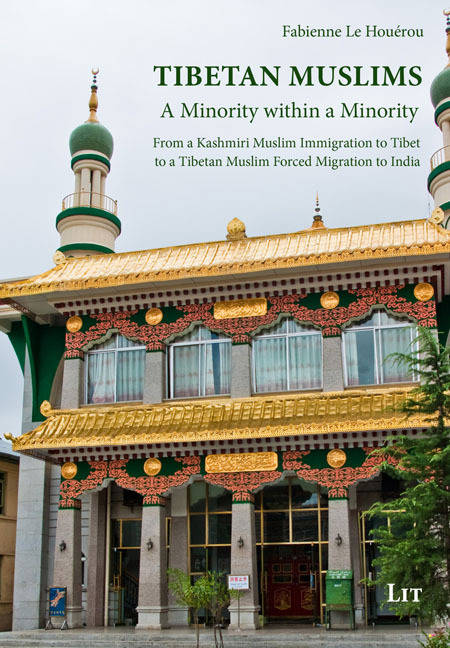
Je cadeautjes zeker op tijd in huis hebben voor de feestdagen? Kom langs in onze winkels en vind het perfecte geschenk!
- Afhalen na 1 uur in een winkel met voorraad
- Gratis thuislevering in België vanaf € 30
- Ruim aanbod met 7 miljoen producten
Je cadeautjes zeker op tijd in huis hebben voor de feestdagen? Kom langs in onze winkels en vind het perfecte geschenk!
- Afhalen na 1 uur in een winkel met voorraad
- Gratis thuislevering in België vanaf € 30
- Ruim aanbod met 7 miljoen producten
Zoeken
Tibetan Muslims
A Minority Within a Minority. from a Kashmiri Muslim Immigration to Tibet to a Tibetan Muslim Forced Migration to India
Fabienne Le Houérou
€ 29,45
+ 58 punten
Omschrijving
This book focuses on the minority of Tibetan Muslims among the Tibetan Diaspora. Most scholars remain unaware of the Tibetan Muslim community or its associations with Buddhism and the Dalai Lama. As a religious and political leader, he is the embodiment of Tibetan space, territory, population, religion, and identity. The Western public has assumed a monolithic vision of Tibet as a pure Buddhist Theocracy. However, Tibet was impacted by other religions, i.e. Christianity and Islam. The 1.000,000 Tibetan refugees in India are one of the largest Tibetan Diaspora; the majority are Buddhist, and the Muslim minority is estimated at no more than a few hundred families. Tibetan Muslims constitute a minority within another Tibetan Buddhist minority of exiled Tibetans in India. The study based on field research emphasizes a hybrid process of the Tibetan Muslim's Diaspora in exile. A cultural Buddhist Tibetan heritage associated with Kashmiri Muslim rituals and customs creates hybrid cultural practices and traditions, which could be characterized as rhizomatic.
Specificaties
Betrokkenen
- Auteur(s):
- Uitgeverij:
Inhoud
- Aantal bladzijden:
- 106
- Taal:
- Engels
- Reeks:
Eigenschappen
- Productcode (EAN):
- 9783643914453
- Verschijningsdatum:
- 1/04/2023
- Uitvoering:
- Paperback
- Formaat:
- Trade paperback (VS)
- Afmetingen:
- 140 mm x 210 mm
- Gewicht:
- 169 g

Alleen bij Standaard Boekhandel
+ 58 punten op je klantenkaart van Standaard Boekhandel
Beoordelingen
We publiceren alleen reviews die voldoen aan de voorwaarden voor reviews. Bekijk onze voorwaarden voor reviews.









